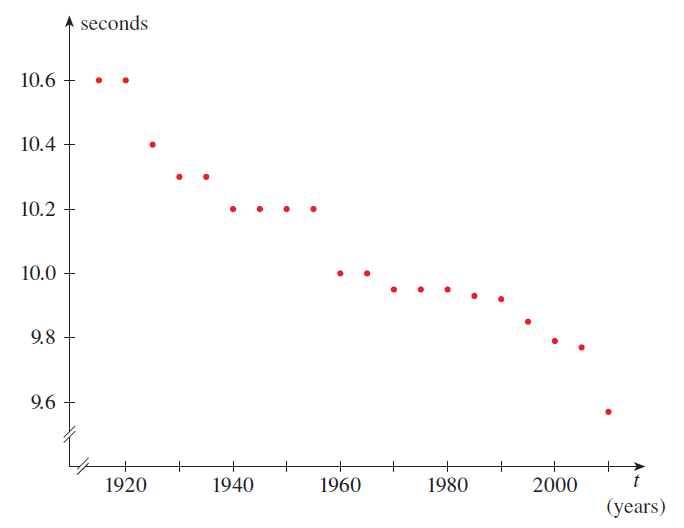Homework 3
Directions:
- Show each step of your work and fully simplify each expression.
- Turn in your answers in class on a physical piece of paper.
- Staple multiple sheets together.
- Feel free to use Desmos for graphing.
Answer the following:
- Suppose $f(x) = 2^x$. Evaluate the following; your answer must be one singular number with no exponents.
- $f(-1)$
- $f(0)$
- $\sqrt[3]{f(6)}$
- $f(5)$
- You are given a function $F(x)$. Find two functions $f, g$ where $F = f \circ g$.
- $F(x) = e^{\sin(x)}$
- $F(x) = \sin(10^x)$
- $F(x) = \log_{32}(e^x)$
- $F(x) = e^{5x}$
- $F(x) = (e^x)^4$
- $F(x) = \ln(\sin(x))$
- Draw two graphs of two functions, one of which is not one-to-one and one of which is one-to-one.
- For each of the following functions, determine if they are inverses of each other.
- $f(x) = 2x - 1, \ \ g(x) = \dfrac{x + 1}{2}$
- $f(x) = \dfrac{1}{x}, \ \ g(x) = \dfrac{1}{x}$
- $f(x) = \dfrac{1}{x - 1}, \ \ g(x) = x + 1$
- $f(x) = \log_{5}(x), \ \ g(x) = 5^x$
- $f(x) = e^\sqrt{x}, \ \ g(x) = (\ln(x))^2$
- If $f$ is a one-to-one function and $f(6) = 17$, what is $f^{-1}(17)$?
- Show why $f^{-1}$ is not the same function as $\dfrac{1}{f}$ with an example.
Hint: The function $f(x) = x^2$. Find $\dfrac{1}{f(x)}$ and use the inverse function property. - Combine into one logarithm:
- $2 \ln 5 + 3 \ln 2$
- $3\log_{10}(a + b) - \frac{1}{2}\log_{10}(a-b) - 2\log_{10}c$
- $\ln(a + b) - \ln(a-b) - 2\ln c$
- Solve each equation for $x$:
- $\ln(x^2 - 1) = 3$
-
$e^{2x}-5e^x + 4 = 0$
Hint: Let $y = e^x$, and perform substitution described in Lecture Note III. - $2^{x-5}=3$
- $\ln(3x - 10) = 2$
- List the first five terms of these sequences. Make sure you have a list of numbers.
- $a_n = \dfrac{1}{n^2}$
- $a_n =(-1)^{n+1}2^n$
- $a_n = \dfrac{2n}{n^2 + 1}$
- $a_n = \cos\dfrac{n\pi}{2}$
- Find a formula for $a_n$ for the following sequences:
- $1, 0, -1,0, 1, 0, -1, 0, \dots$
- $\dfrac{1}{2}, -\dfrac{4}{3}, \dfrac{9}{4}, - \dfrac{16}{5}, \dfrac{25}{6}, \dots$
- $-1, 2, -4, 8, -16, 32, \dots$
- Draw a graph of a sequence which satisfies \[\lim_{n\rightarrow \infty} a_n = 3\]
- Below is a sequence $a_t$ of the world record times for the men's 100 meter spring every five years.
- From a biological perspective, do you think $\lim_{t\rightarrow\infty} a_t = 0$ or greater than zero? Justify your answer.
-
Determine whether the following sequences are convergent or divergent. For the ones that converge, find out what it converges to.
- $a_n = \dfrac{3 + 5n}{2 + 7n}$
- (skip this one) $a_n = 2^{-n} + 6^{-n}$
- (skip this one) $a_n = \dfrac{10^n}{1 + 9^n}$
- (skip this one) $a_n = \dfrac{3^{n+2}}{5^n}$
- $a_n = \dfrac{2n^3 + n - 1}{n^2 + 1}$
- (skip this one) $a_n = \dfrac{2^n + 3^n}{5^n}$
- (skip this one) $a_n = \dfrac{n^3}{\sqrt{n^7 + 1}}$
